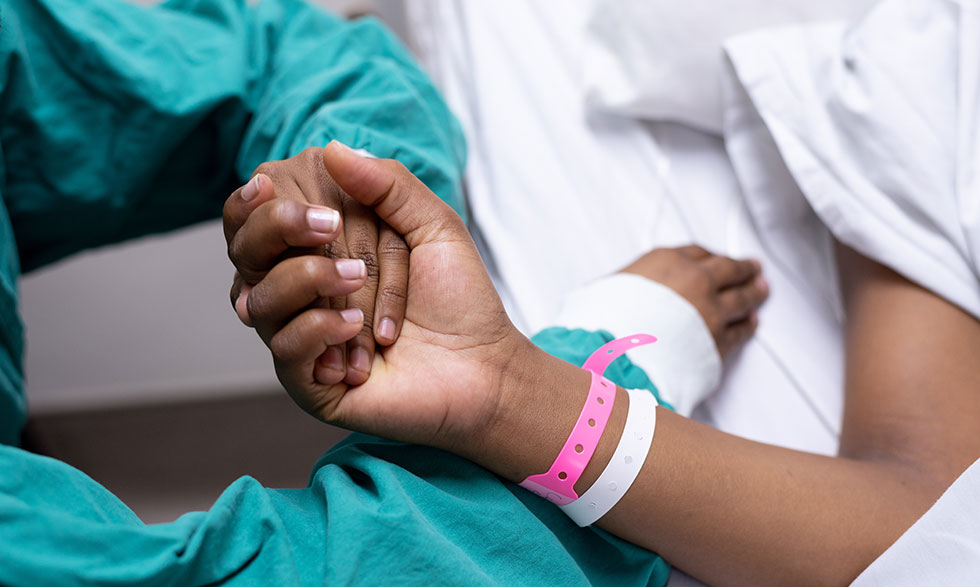
“I can’t describe the pain,” says Yinka. “I had it everywhere in my body—my chest, my back, my face, and even in my fingernails.”
Yinka is a 37-year-old second grade teacher in Baltimore, Maryland. When Yinka was only 1 year old, she was diagnosed with sickle cell disease (SCD), a painful genetic disease that causes problems with red blood cells.
Growing up, she knew she was different because of SCD.
“I wasn’t like the other children in school,” she says. “I was small. I couldn’t run as fast.” She also missed a lot of school due to doctor’s appointments and illness.
“There was pain wherever the blood flows. It hurt so badly,” she recalls.
Yinka grew up in Nigeria, Africa, where access to new and developing treatments for the disease was limited.
Determined to get Yinka the help she needed, her mother moved their family to the U.S.
But in the U.S., Yinka continued to struggle. She remembers constantly going to her doctor, explaining the pain and looking for any kind of help.
“I would look at him in the eyes and say, ‘Something is wrong.’ But the doctor would just send me home each time with medication.”
When she was in her early 20s, Yinka and her mother started exploring bone marrow transplants, the only cure for sickle cell disease to date.
“I remember watching a boy with sickle cell disease playing in the hospital waiting room. He looked so healthy, not small, not with yellow eyes, like me,” Yinka recalls.
Her mother learned that the boy had received a bone marrow transplant from his younger brother. She wanted the same for her daughter.
A perfect match
Yinka was very fortunate to have a younger sister who was a half-match for a bone marrow transplant.
“My sister hates needles, but she took it all like a champ,” Yinka says. “I knew she was doing it for me.”
The transplant process was long. It involved months of drawing blood, stem-cell injections, hospitalizations, kidney monitoring, and much more.
But despite the lengthy and sometimes challenging process, Yinka’s family finally got the news they had been waiting for.
“I woke up one morning, and something was different. I actually felt good. For the first time ever, I woke up without pain,” Yinka says.
She and her mom were jumping for joy and laughing.
“You tell people you have pain, but they just don’t get it. For the first time, I knew what it was like to not have any pain,” Yinka adds.
Spreading awareness
When a person has sickle cell disease, they experience severe pain every day.
Yinka hopes to build awareness about this pain so that people take the disease and the patient seriously.
“It’s a chronic disease and we aren’t lying,” Yinka says. “We need to take care of the severe pain that we are in.”
Tips for living with sickle cell disease
Yinka would like to educate everyone, including loved ones and people with sickle cell disease. She provided a few tips to NIH MedlinePlus magazine.
For people with sickle cell disease:
- See a specialist: See a sickle cell disease or hematology specialist to explore your treatment options and ways to manage your pain.
- Educate yourself and others: Learn as much as you can about the disease. “I am where I am today because my mom did not suffer in silence,” Yinka says. “She read about sickle cell disease, and she asked questions.” MedlinePlus offers trusted health information and links to resources and clinical trials.
- Seek mental health treatment if you need it: “If you have sickle cell disease, you may become depressed,” Yinka says. “It can be miserable, and that can make you sicker.” She recommends seeking out a therapist or other mental health provider for support. Patient support groups, both in person and online, can also help.
For loved ones:
- Be respectful: “Don’t tell a sickle cell person they are not having pain,” Yinka says. Try to be sympathetic, listen, and understand that while you may not see the pain, it is there and is often debilitating.
